Prices in AUD. Shipping worldwide. Flat rate $8 postage per order within Australia. International by weight calculated at checkout. Read full terms.
-
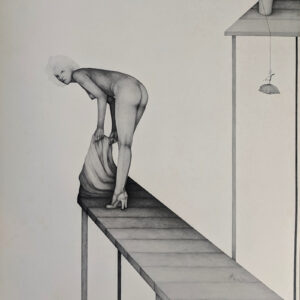
![[On'na no hengen]](https://www.thebookmerchantjenkins.com/wp-content/uploads/0018160-300x300.jpg)
[On’na no hengen]
AU$180.00 Read MoreAdd to cartJo Keito
Kariya: [Shibafune garo], 1980.Portfolio of 20 prints plus 1 signed copperplate engraving by Japanese artist Jo Keito (1949-).
-

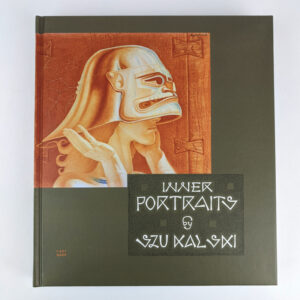
Inner Portraits by Szukalski
AU$65.00 Read MoreAdd to cartStanislaw Szukalski
San Francisco: Last Gasp, 2020.Stanislaw Szukalski was a Polish sculptor, painter, draftsman and anthropologist. He was part of the Chicago Renaissance in the 1920s, enjoyed fame in 1930s Poland as a nationalistic sculptor, but spent his last years in obscurity. This book presents a major survey of his portraiture of peers, patrons, and historical figures. Most artworks are accompanied by essays and background information, along with personal anecdotes and reflection, providing an intimate and articulate discussion on art, politics, philosophy, and more. Szukalski is now remembered for both his striking artwork and political, scientific, and philosophical views, including the pseudoscientific-historical theory of Zermatism. In 2018 Szukalski became the subject of the critically acclaimed Netflix documentary ‘Struggle: The Life and Lost Art of Szukalski’ directed by Irek Dobrowolski and produced by Leonard DiCaprio. Introduction by Ernst Fuchs.
-
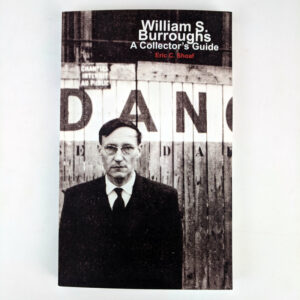
William S. Burroughs: A Collector’s Guide
AU$30.00 Read MoreAdd to cartEric C. Shoaf
Providence: Inkblot Publications, 2014.“For decades collectors have marveled and admired the works of William S. Burroughs. The sheer number and variety of publications, whether books, pamphlets, limited editions, signed editions, magazine or journal contributions, contributions to the works of other authors, or simply books and other printed biographical material about Burroughs is well over a thousand different items. The purpose of this Collector’s Guide is to provide a gathering of Burroughs material which was available in the published world through 2008.” (publisher’s blurb)
-
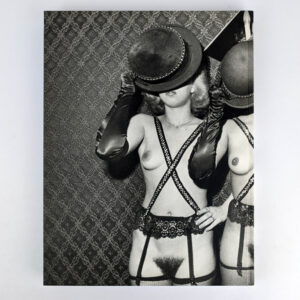
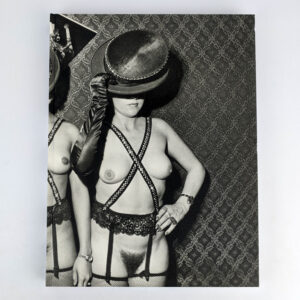
Sex-Theater
AU$90.00 Read MoreAdd to cartAndrew Gelpke
Zurich & Leipzig: cpress & Spector, 2015.“Andre Gelpke’s series Sex-Theater was produced in the 1970s and depicted performers from a number of different sex theatres in Hamburg’s St. Pauli district. “The fascination that captivated me as a photographer came from the personality of the individual, from the performer who was prepared to realize in public the secret sexual fantasies of an inhibited society, simply in exchange for a fee.” Sex-Theater was first published as a book in 1981 and quickly sold out. The edition produced by Spector Books together with cpress represents a new “staging” of the series: it includes an expanded selection of images and new texts, and is presented in a form that offers this collection of photos a contemporary framing. The era that is depicted here is over, and the decline of these clubs is documented in Sex-Theater.” (publisher’s blurb)
-
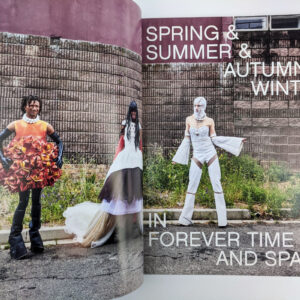
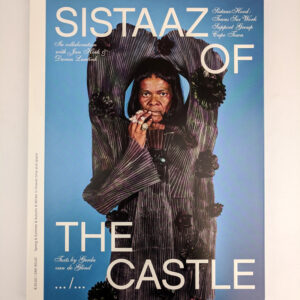
Sistaaz of the Castle: SistaazHood: Trans Sex Work Support Group, Cape Town
AU$48.00 Read MoreAdd to cartJan Hoek; Duran Lantink; Gerda van de Glind; SistaazHood
[Ghent]: Art Paper Editions, 2019.“Jan Hoek, fashion designer Duran Lantink and trans sex worker organisation SistaazHood present Sistaaz of the Castle, an ongoing project about the colorful looks and lives of transgender sex workers that roam the streets of Cape Town, South Africa. Most of the girls are homeless, living under a bridge near Cape Towns castle. The Sistaaz are eager activists, proud to be trans, proud to be a sex worker, and even prouder of their stunning sense of style. And they want it to be acknowledged. A series of photographs and a fashion collection based on the girls appearance and their ability to turn whatever they find into the most exuberant outfits was created. This has already resulted in a fashion show at Amsterdam Fashion Week (a show in Cape Town in still on the wish list) and a photo exhibition in Foam Amsterdam.” (publisher’s blurb)
-
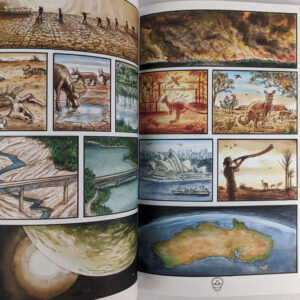
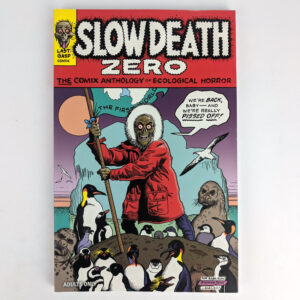
Slow Death Zero
AU$35.00 Read MoreAdd to cartJon B. Cooke; Ronald E. Turner
San Francisco: Last Gasp, 2021.“Slow Death Zero is a revival of the legendary underground horror comix anthology, Slow Death. This one-shot 50th anniversary edition includes all-new comix by 33 writers and artists, with one classic reprint by R. Crumb, 28 stories and pin-ups to chill the bones in our temperature-rising age of global warming. Inspired by the ecological advocacy of the original title, which debuted on the very first Earth Day in 1970, this edition features horrifying tales depicting the environmental calamity facing our world in this time of climate change. The book is headlined by a savage depiction of the implications of the melting polar ice cap in Antarctica, by award-winning cartoonist/illustrator William Stout, who provides the cover. Also included is work by Richard Corben, Rick Veitch, Drew Friedman, Bryan Talbot, Hunt Emerson, Peter Kuper, and many more, as well as unseen work by the late, great Greg Irons. This is a wild and outrageous collection of environmental-themed horror stories, a fat compilation by the most diverse team of Slow Death contributors ever assembled!” Edited by Jon B. Cooke and Ronald E. Turner.
-
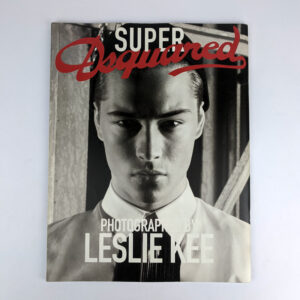
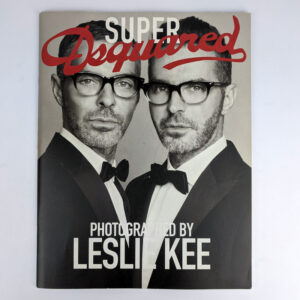
Super Dsquared
AU$100.00 Read MoreAdd to cartLeslie Kee
[Tokyo]: Danny & Teddy Press, 2013.Photodocumentation of fashion label Dsquared2’s 2013 SS men and women collection by Japan based Singaporean photographer Leslie Kee (1971-). Kee is a successful commercial photographer with numerous big brand clients. His work has been published in fashion magazines including Vogue, Harper’s Bazaar, Rolling Stone and taken portraits of celebrities including Madonna, Beyonce, Kate Moss, Lady Gaga, Yoko Ono, Jackie Chan, and many others. This copy inscribed by Leslie Kee.
-
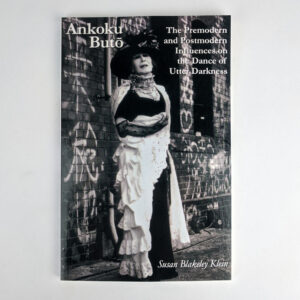
Ankoku Buto: The Premodern and Postmodern Influence on the Dance of Utter Darkness
AU$25.00 Read MoreAdd to cartSusan Blakeley Klein
Ithaca: East Asia Program, Cornell University, 1988.“A brief introduction to the history, philosophy, and techniques of the Japanese avant-garde dance movement, Ankoku Buto. Evoking images of grotesque beauty, revelling in the seamy underside of human behavior, Buto dance groups such as Sankai Juku and Dai Rakuda-kan have performed to wide critical and popular acclaim, making Buto one of the most influential new forces in the dance world today. The monograph traces the development of Buto from its birth in the bleak post-war landscape of 1950s Japan, and then addresses the question of Buto as a post-modern phenomenon, before going on to examine the influence of traditional Japanese performance on Buto techniques. The last chapter analyzes a specific dance (Niwa – The Garden) by Muteki-sha, to show how these techniques are used concretely. Includes translations of four essays on Buto by contemporary Japanese dance critics.” (publisher’s blurb)
-

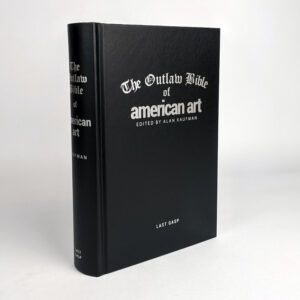
The Outlaw Bible of American Art
AU$60.00 Read MoreAdd to cartAlan Kaufman
San Francisco: Last Gasp, 2016.“A 700-page revolutionary art world shocker: a Who’s Who alternative canon of marginalized or famed audodidactic paint-slinging loners who followed their own outrageous, sometimes catastrophic visions to the heights of fame or the depths of Hell. Documenting movements from the post-war to the present, this anthological barbaric yawp contains manifestos, essays, interviews and biographies from some of the most cutting edge American art writers plus hundreds of full color and black and white images and rare photos. The Outlaw Bible of American Art brings together everything from NO! artists, Blackstract Expressionists, Beats and Beckettian Distortionists to Dystopic Futuristic Pranksters, Subcultural Gonzo Anthropologists and Self-Mutilating Visionary Unigenderists in a rollicking visually gorgeous celebration of the reclaimed no-holds-barred spirit of American Art. Includes Boris Lurie, Forrest Bess, Gertrude Stein, Tom Wolfe, Dash Snow, Carlo McCormick, Annie Sprinkle, John Yau, Allen Ginsberg, R. Crumb, Claes Oldenberg, Thomas Nozkowski, Richard Kern, Joe Coleman, Molly Crabapple, David Choe, Robert Williams, Nick Zedd, David Wojnarowicz and hundreds more.” (publisher’s blurb)
-
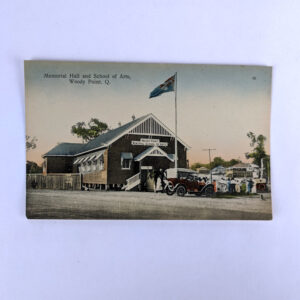
Retrac Series Postcard 33: Memorial Hall and School of Arts, Woody Point. Q.
AU$15.00 Read MoreAdd to cartRetrac
Germany: Retrac, No date.One of the early 20th century Retrac series of postcards depicting scenes around Brisbane, Queensland. Printed in Germany.
-
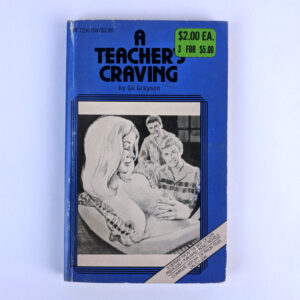
A Teacher’s Craving
AU$20.00 Read MoreAdd to cartGil Grayson
Hollywood: American Art Enterprises, 1986.Erotic pulp fiction. TCH-104
-
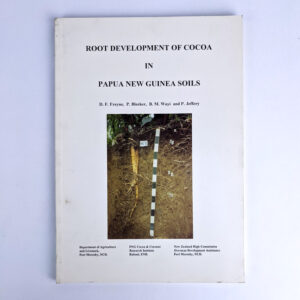
Root Development of Cocoa in Papua New Guinea Soils
AU$80.00 Read MoreAdd to cartD. F. Freyne; P. Bleeker; B. M. Wayi; P. Jeffery
Brisbane: Freyne Consulting, 1996.Technical report of research by the Land Utilisation Section, Department of Agriculture and Livestock. Write up commissioned by the Governments of Papua New Guinea and New Zealand. Scarce, 2 copies in OCLC at July, 2021, at the University of Adelaide and Wageningen University, Netherlands.
-
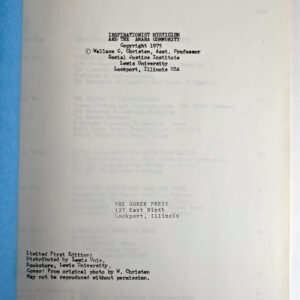
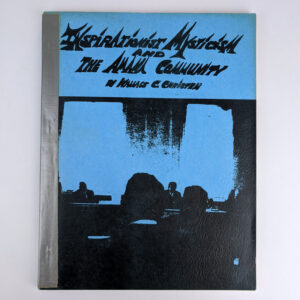
Inspirationist Mysticism and the Amana Community
AU$80.00 Read MoreAdd to cartWallace C. Christen
Lockport: The Ogren Press, 1975.Study of the communal religious mysticism of the Amana Community in Iowa by Wallace C. Christen (1935-2013), at the time Assistant Professor at the Social Justice Institute, Lewis University, and himself an Inspirationist and Amana native.
-
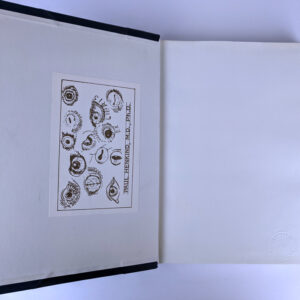
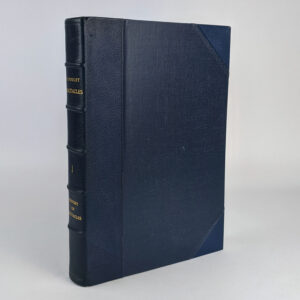
Atlas on the History of Spectacles (Volume 1)
AU$300.00 Read MoreAdd to cartW. Poulet
Bonn: Wayenborgh, 1978.Volume 1 only of the 2 volume set. Volume One being a catalogue of spectacles from the collections of Carl Zeiss, Otto Hallauer, and Pierre Marly. Translated from the German by Frederick C. Blodi with an introduction by Dr. Wolfgang Pfeiffer, ‘A Short History of Spectacles’ by H. W. Holtmann, and ‘A Contribution to the History of Contact Lenses’ by Hans-Walter Roth Ulm. This being one of the deluxe edition bound in half leather by K. N. W. Page & Co., Edinburgh.
-
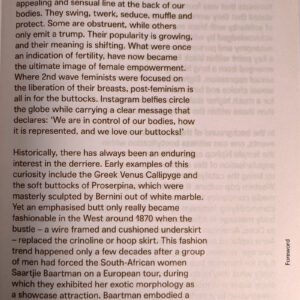
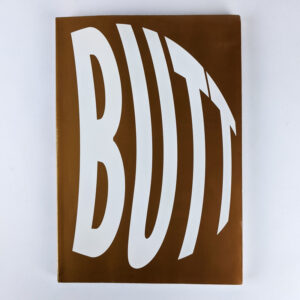
Post-Butt: The Power of the Image
AU$35.00 Read MoreAdd to cartMelani De Luca
: Onomatopee, 2019.“Post-Butt analyses the virality of images in our mediated society. It is a case study around the image of female butts, bootys, and behinds, and their influence in media, society and art. The butt is the protagonist of mass-mediated culture, it is the democratic sex organ par excellence. The phenomenon of bootyfication exists in many contexts, as varied as the exploitation of the body in colonialism to 90s hiphop culture. Post-Butt goes through different periods in time and place, to analyse the political meaning of the usage of the image of the female buttocks. It discusses the role of the booty in varied cultural expressions such as film, Internet art, music videos, dance and plastic surgery; and aims to reflect on how our society is conditioned by viral images that do not only exist in the digital context, but have deep consequences on our physical world as well.” (publisher’s blurb)
-
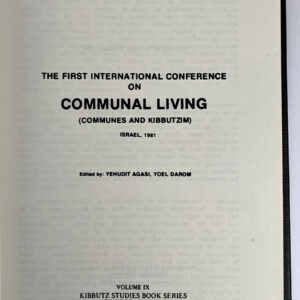
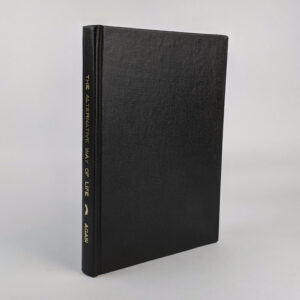
The Alternative Way of Life: The First International Conference on Communal Living (Communes and Kibbutzim), Israel, 1981
AU$50.00 Read MoreAdd to cartYehudit Agasi; Yoel Darom
Norwood: Kibbutz Studies Book Series, Norwood Editions, 1985.Kibbutz, Communal Society, and Alternative Social Policy Series Volume IX.
-
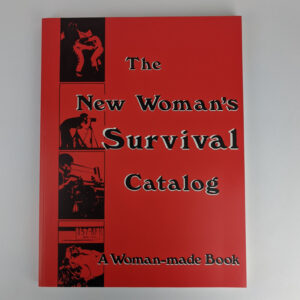
The New Woman’s Survival Catalog
AU$60.00 Read MoreAdd to cartKristen Grimstad; Susan Rennie
New York: Primary Information, 2019.“Published in 1973, The New Womans Survival Catalog is a seminal survey of Second Wave feminist efforts, which, as the editors noted in their introduction, represented an ‘active attempt to reshape culture through changing values and consciousness’. Assembled by Kirsten Grimstad and Susan Rennie in only five months, The New Womans Survival Catalog makes a nod to Stewart Brands influential Whole Earth Catalog to map a vast network of feminist alternative cultural activity in the 1970s. Grimstad and Rennie set out on a two month road trip in the summer of 1973, meeting and interviewing all the featured organisations and individuals, and gathering information and further references along the way to complete the publication. From arts organisations to bookstores and independent presses, health, parenting, and rape crisis centres, and educational, legal and financial resources, this book provides crucial insight into feminist initiatives and activism nationwide during the Womens Movement. Styled as a sales catalog, The New Womans Survival Catalog comprises listings and organisational descriptions, articles, and extensive illustrations, as well as a ‘Making the Book’ section, detailing the publications production.” (publisher’s blurb)
-
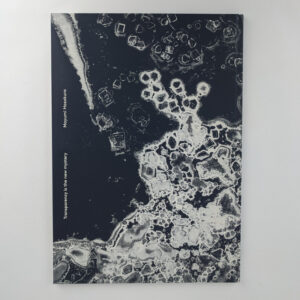
Transparency is the new mystery
AU$75.00 Read MoreAdd to cartMayumi Hosokura
[London]: MACK, 2016.“Transparency is the new mystery comprises twenty-two images of nudes and crystals, by Japanese photographer Mayumi Hosokura. The fragile silhouette of a hand, a coiled nude body, or the transfixing symmetry of crystalline minerals are shown in soft, translucent black and white images, held together by an enigmatic interior logic.” (publisher’s blurb)
-

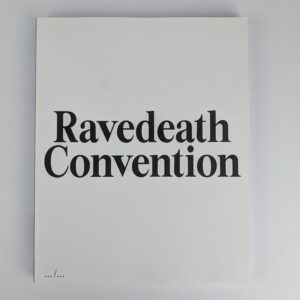
Ravedeath Convention
AU$70.00 Read MoreAdd to cartJan Philipzen
[Gent]: Art Paper Editions, 2020.“Started as a visual diary, Ravedeath Convention soon grew into a hybrid of autobiography and fiction. While love, joy and friendship are explored, violence and excess come about too, often captured only as traces and symptoms. A collision of different, occasionally mismatched, cultural symbols stresses the all-embracing blend of subcultures as a fundamental feature of our times. The first pictures taken at age thirteen, this series of black and white images is the edit of a continuous process of photographing, revisiting and reworking over a span of ten years. In the crippled prints the physical presence of body and photograph merge, celebrating human imperfection. The title references Tim Heckers album Ravedeath 1972′.” (publisher’s blurb)
-
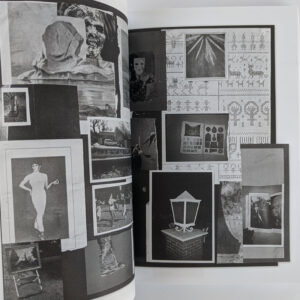
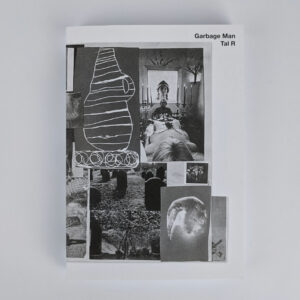
Garbage Man
AU$65.00 Read MoreAdd to cartTal R
[Zurich]: Nieves and innen, 2021.“Garbage Man — could refer to Tal R himself as manic collector of what other people would perhaps refer to as refuse. Collecting and arranging of images is an integral component of his artistic practice and arises in its own manifestation from an inner necessity. The Yiddish word Kolbojnik (Waste, Remains) also runs through the work of the artist within the titling of many of his works. His collection, which can be found within the individual collages, consists of an eclectic mix of primitive tribal art, art history masterpieces, pornos, comics, private photos, childhood pictures, sketches and picture book illustrations, and was collected by Tal R over a period of 25 years. The works evoke in their pseudo-encyclopaedic phenomenon associations, Aby Warburg’s Mnemosyne Atlas, or, to refer to another artist, the Atlas by Gerhard Richter. Similar to him, the arranged pieces within the collages from Garbage Man served and serve the artist also as templates for paintings and sculptures.” (publisher’s blurb)
